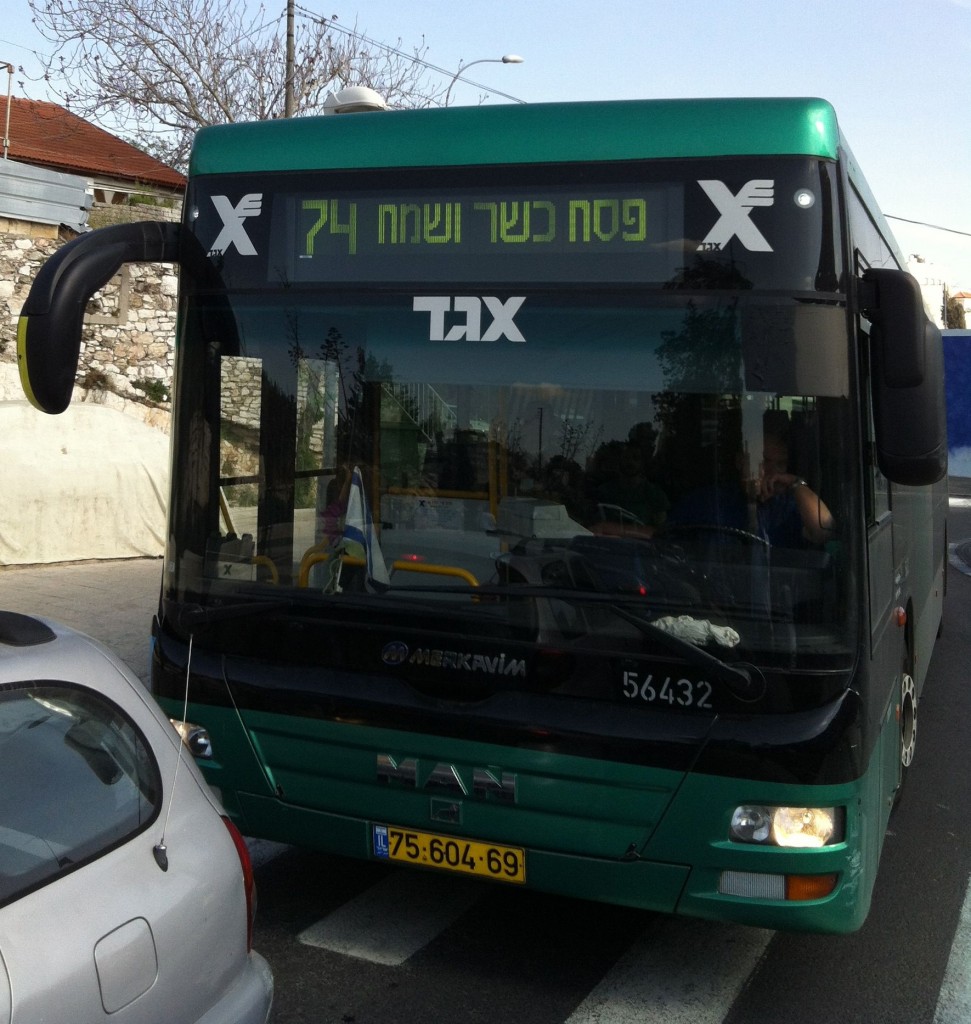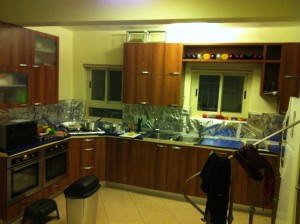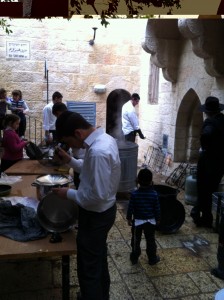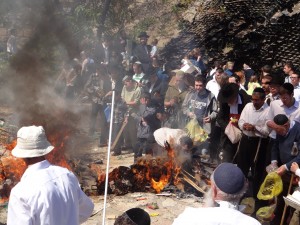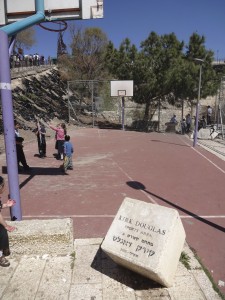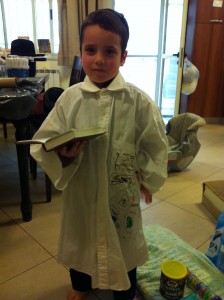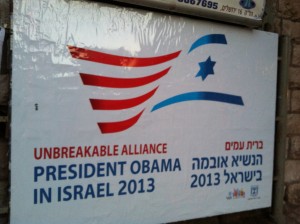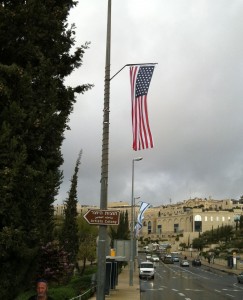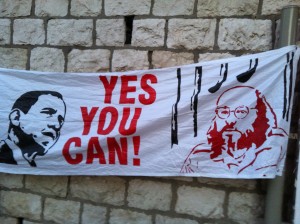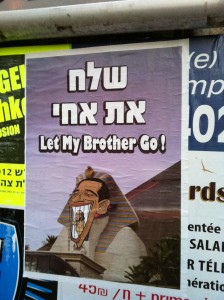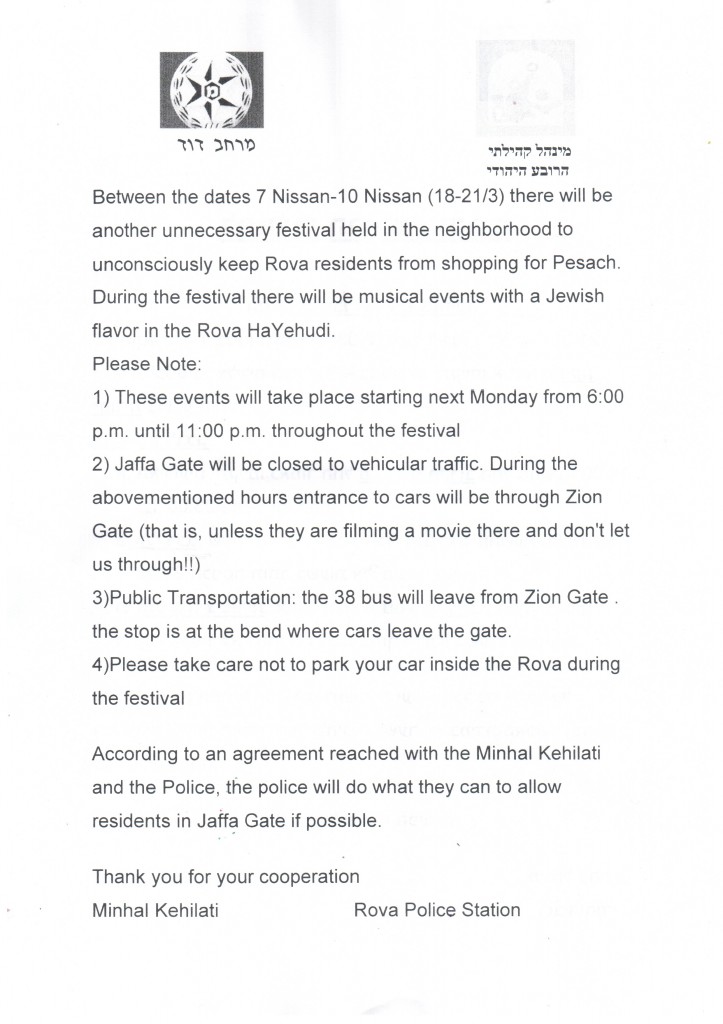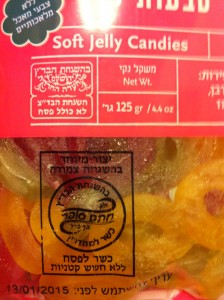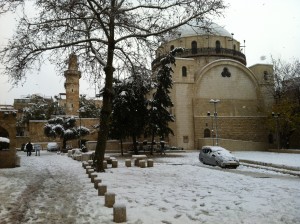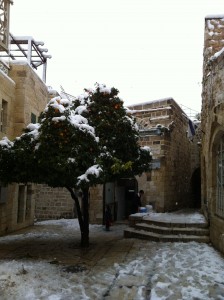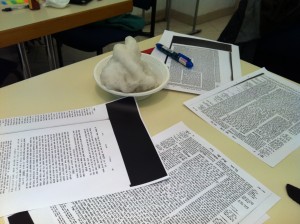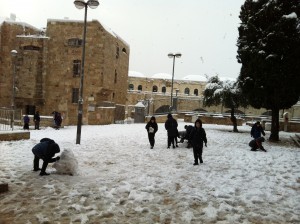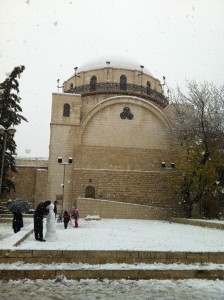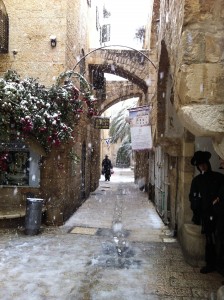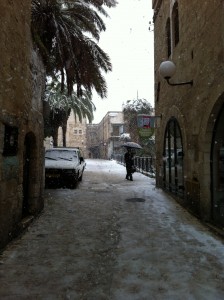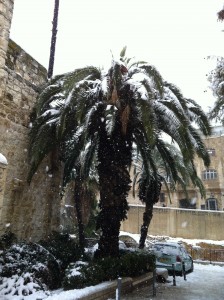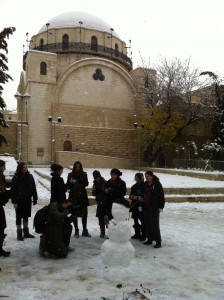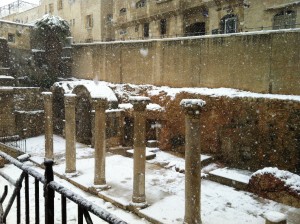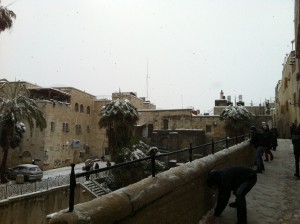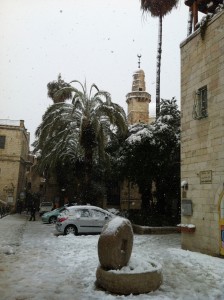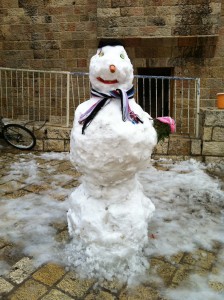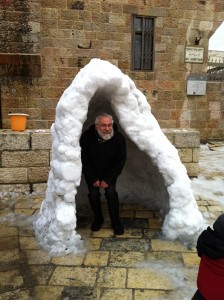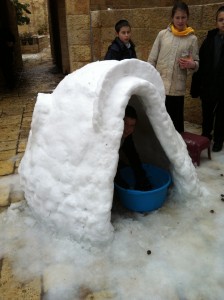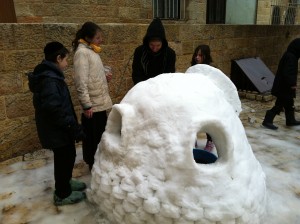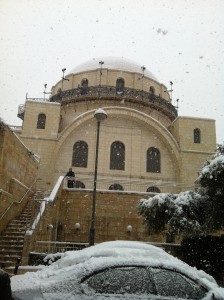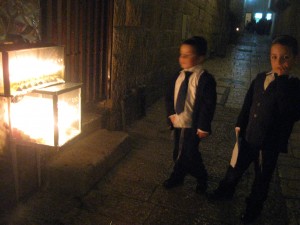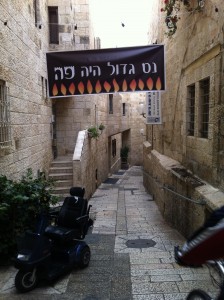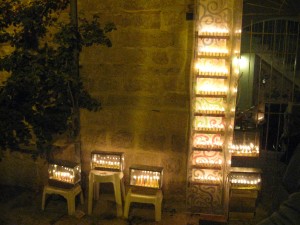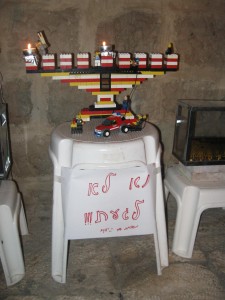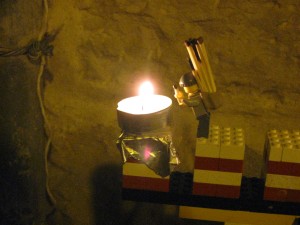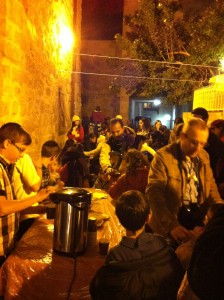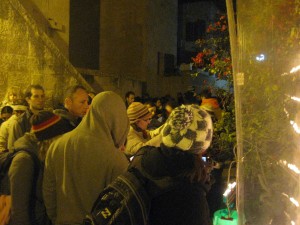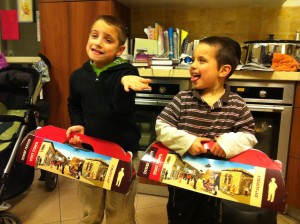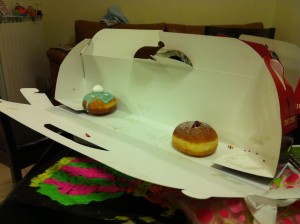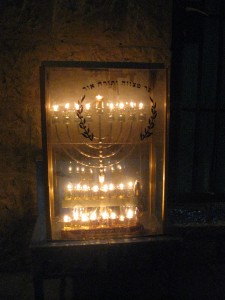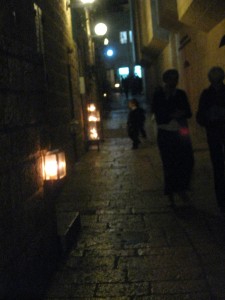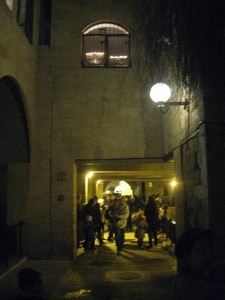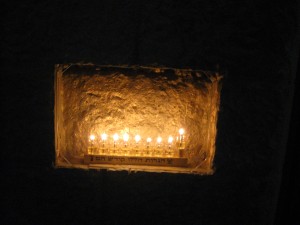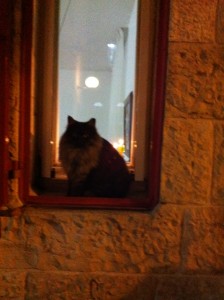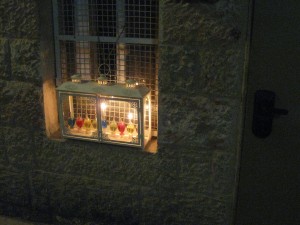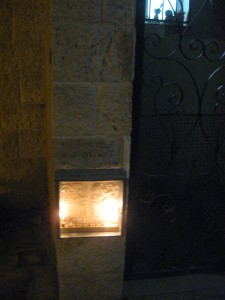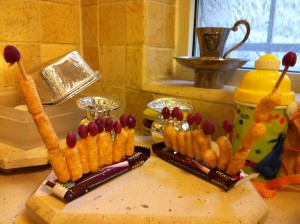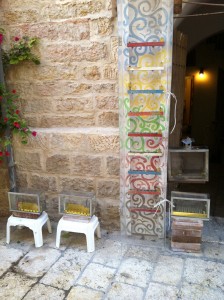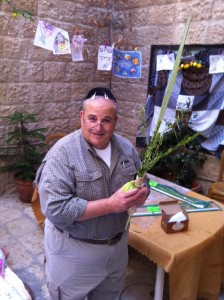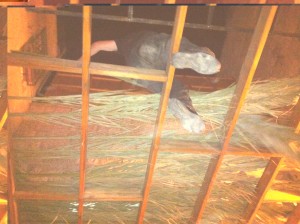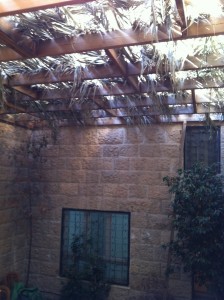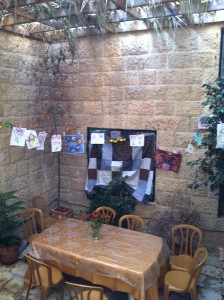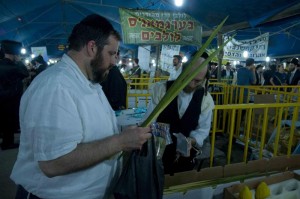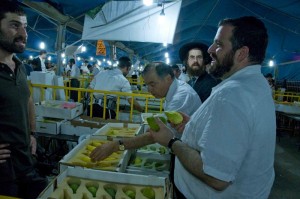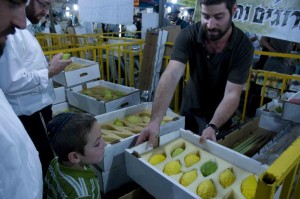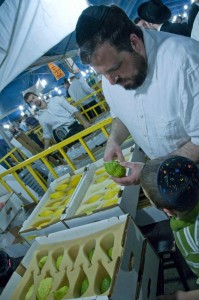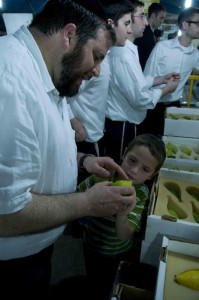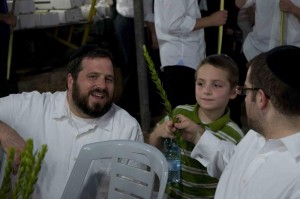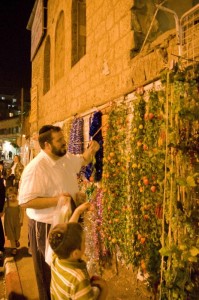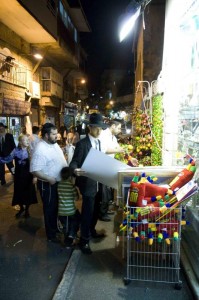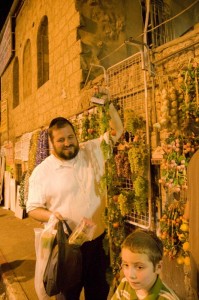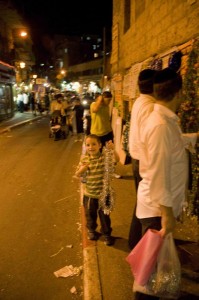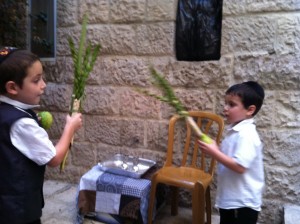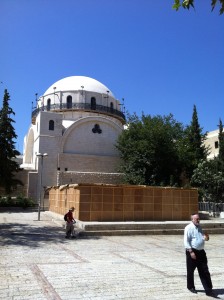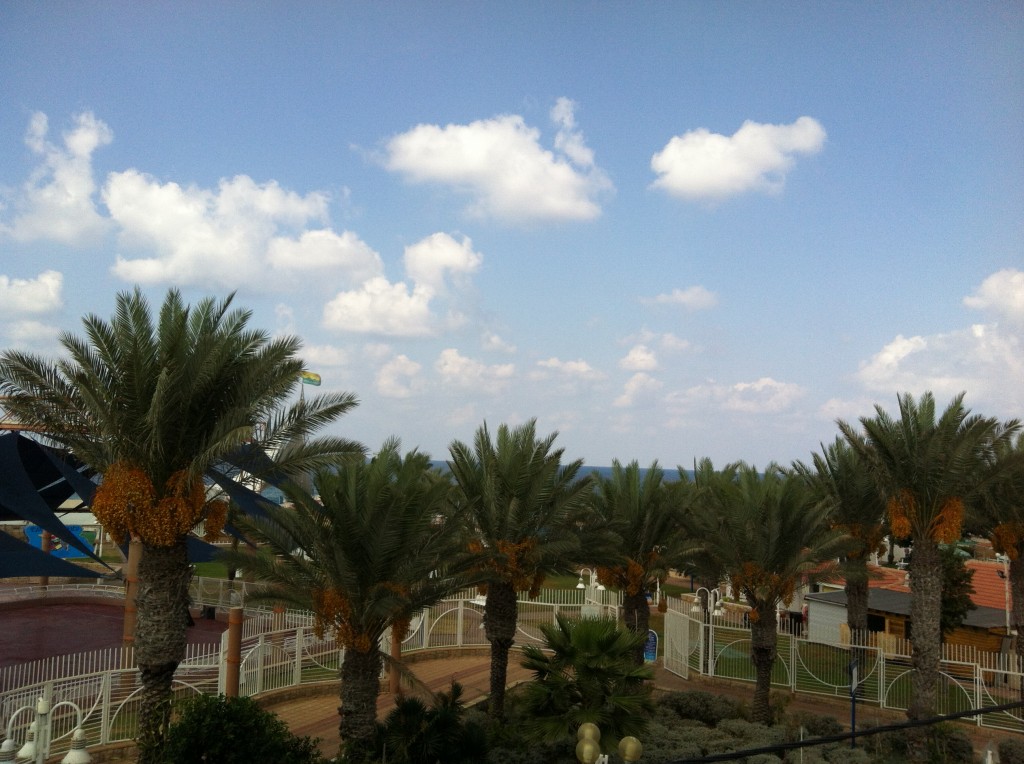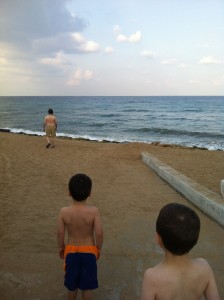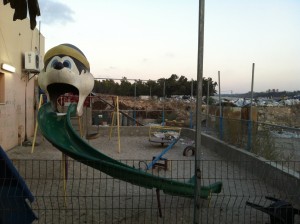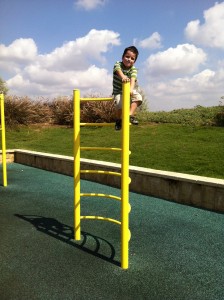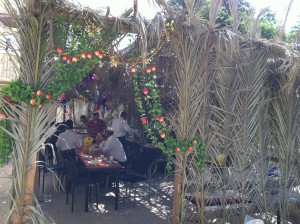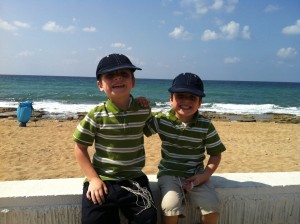Notwithstanding our ill-timed trip down south, we managed to get done what needed to get done to get ready for the chag, without undue bloodshed. Pesach is when frum Jews achieve a whole new level of OCD in our religious fanaticism. Lawyers are often accused, correctly, of a tendency to belt-and-suspenders over-cautiousness. Orthodox Jews at Pesach take more of a put-a-belt-and-suspenders-on-a-jumpsuit-then-burn-the-jumpsuit-and-wrap-yourself-in-plastic-and-duct-tape-inside-aluminum-foil approach.
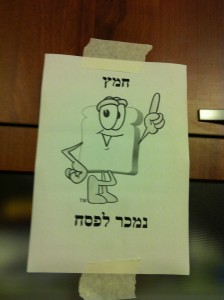 You can find lots of good explanations out there why we do this. “At Pesach time, chametz is compared to the yetzer hara (evil inclination), and we want to be utterly rid of it.” “We were saved from Egypt by virtue of chumras (stringencies), so we commemorate this by piling on the chumras in our Pesach observance.” “Halachically, eating any quantity of chametz – no matter how small – is a violation.” But, of course the real reason is bragging rights. (“Oh, you only triple-wrap your countertops? This is why we don’t mish.”)
You can find lots of good explanations out there why we do this. “At Pesach time, chametz is compared to the yetzer hara (evil inclination), and we want to be utterly rid of it.” “We were saved from Egypt by virtue of chumras (stringencies), so we commemorate this by piling on the chumras in our Pesach observance.” “Halachically, eating any quantity of chametz – no matter how small – is a violation.” But, of course the real reason is bragging rights. (“Oh, you only triple-wrap your countertops? This is why we don’t mish.”)
Another great thing about Pesach preparations is that fire is prominently involved. If there are cooking utensils that you want to use for Pesach but have been used for chametz, you have to clean them thoroughly, then do hagala (dunk them in boiling water). Oven racks are heated red-hot with a blowtorch. In Chicago, they set up a place to do this at one of the yeshivos as part of a pre-Pesach fair. In Jerusalem, you’ll see dudes with barrels of boiling-hot water on the street corners.
Here in the Rova, they set up shop in front of the community center. You had to wade through the spectator children to get there. One could cynically observe that they don’t have television… and I guess I just did. But it is really thrilling how the kids get so invested in the excitement of the holiday. For literally thousands of years, Jewish children have been caught up in watching hagala, helping to clean, gathering chametz to be burned, learning to say Mah Nishtanah (the Four Questions), etc., etc. As with pretty much everything, they take their cues from us. Our enthusiasm for Pesach becomes their enthusiasm. And their children’s enthusiasm. And their children’s. And so on, for over 3,300 years.
Anyway, back to fire. The day before Pesach, we go through our houses at nightfall, looking for any chametz we may have overlooked (this is called “bedikas chametz“). The next morning, we take all of our remaining chometz and burn it in a giant community bonfire. In the U.S., these fires are closely supervised by local firemen, with at least one fire truck present and ready for action. Here… well, not so much. I’m sure you’re wondering “why burn the chametz instead of just throwing it in the garbage?” To which I say, “what part of ‘giant community bonfire’ don’t you understand?”
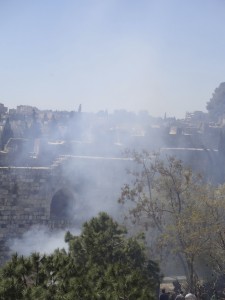 The community fire for bi’ur chametz (destruction of chametz) was set up near Sha’ar Tzion (the Zion Gate), adjacent to the Kirk Douglas Sports Area. It’s a walk down the hill from the parking lot. The smoke from the burning chametz was wafting over the city walls, and it brought to mind all the kinds of smoke that have risen over Jerusalem. There were the mighty clouds of the korbanos, the ketores, and the Shechinah… and then the billowing black smoke of the burning Batei Mikdashim, and the whole city ablaze at the hands of rampaging Roman legions. To paraphrase the tefillah we say at the conclusion of learning, “we burn and they burn…” but ours should be for the sake of olam habah.
The community fire for bi’ur chametz (destruction of chametz) was set up near Sha’ar Tzion (the Zion Gate), adjacent to the Kirk Douglas Sports Area. It’s a walk down the hill from the parking lot. The smoke from the burning chametz was wafting over the city walls, and it brought to mind all the kinds of smoke that have risen over Jerusalem. There were the mighty clouds of the korbanos, the ketores, and the Shechinah… and then the billowing black smoke of the burning Batei Mikdashim, and the whole city ablaze at the hands of rampaging Roman legions. To paraphrase the tefillah we say at the conclusion of learning, “we burn and they burn…” but ours should be for the sake of olam habah.
We were invited out for the seder (another experience for us chutzniks – just one seder!), and we held a family meeting to decide whether to stay home and make our own. Given our usual practice of spending Pesach with family, and friends in the years before that, we’ve never actually made our own seder. We unanimously decided to take this opportunity. In honor of our location, I prepped with the haggadah of Rav Avigdor Nebenzahl, shlita, and the boys came to the seder loaded for bear with their questions.
You would have thought that, with a table of just the four of us (Mordechai was soon off to his crib), things would have gone pretty fast. But the boys were really into it (the candy rewards for questions didn’t hurt), and appreciated the extra attention, and we were still hard-pressed to eat the afikomen before chatzos (halachic midnight, which was at 11:45 p.m. seder night).
As I was sitting at the head of the table, in my kittel, making the yom tov kiddush, it occurred to me that this was the first time anyone in my family had made a seder in Jerusalem in approximately 2,000 years. It was suddenly very difficult to get through shehechiyanu.

